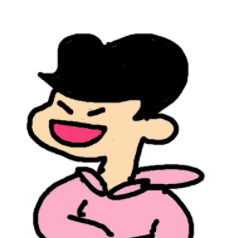// Include standard headers
#include <stdio.h>
#include <stdlib.h>
#define GLEW_STATIC
// Include GLEW
#include <GL/glew.h>
// Include GLFW
#include <GLFW/glfw3.h>
GLFWwindow* window;
#include <direct.h>
// Include GLM
#include <glm/glm.hpp>
using namespace glm;
#include "common/shader.hpp"
#include <glm/gtc/matrix_transform.hpp>
int main( void )
{
// Initialise GLFW
char curDir[1000];
_getcwd(curDir,1000);
printf( "%s", curDir);
if( !glfwInit() )
{
fprintf( stderr, "Failed to initialize GLFW\n" );
getchar();
return -1;
}
glfwWindowHint(GLFW_SAMPLES, 4);
glfwWindowHint(GLFW_CONTEXT_VERSION_MAJOR, 3);
glfwWindowHint(GLFW_CONTEXT_VERSION_MINOR, 3);
glfwWindowHint(GLFW_OPENGL_FORWARD_COMPAT, GL_TRUE); // To make MacOS happy; should not be needed
glfwWindowHint(GLFW_OPENGL_PROFILE, GLFW_OPENGL_CORE_PROFILE); //We don't want the old OpenGL
// Open a window and create its OpenGL context
window = glfwCreateWindow( 1024, 768, "Tutorial 03 - Matrices", NULL, NULL);
if( window == NULL ){
fprintf( stderr, "Failed to open GLFW window. If you have an Intel GPU, they are not 3.3 compatible. Try the 2.1 version of the tutorials.\n" );
getchar();
glfwTerminate();
return -1;
}
glfwMakeContextCurrent(window);
// Initialize GLEW
glewExperimental = true; // Needed for core profile
if (glewInit() != GLEW_OK) {
fprintf(stderr, "Failed to initialize GLEW\n");
getchar();
glfwTerminate();
return -1;
}
// Ensure we can capture the escape key being pressed below
glfwSetInputMode(window, GLFW_STICKY_KEYS, GL_TRUE);
// Dark blue background
glClearColor(0.0f, 0.0f, 0.4f, 0.0f);
GLuint VertexArrayID;
glGenVertexArrays(1, &VertexArrayID);
glBindVertexArray(VertexArrayID);
// Create and compile our GLSL program from the shaders
GLuint programID = LoadShaders( "SimpleTransform.vertexshader", "SingleColor.fragmentshader" );
// Get a handle for our "MVP" uniform
GLuint MatrixID = glGetUniformLocation(programID, "MVP");
// Projection matrix : 45?Field of View, 4:3 ratio, display range : 0.1 unit <-> 100
glm::mat4 Projection = glm::perspective(glm::radians(10.0f), 4.0f / 3.0f, 0.1f, 100.0f);
// Or, for an ortho camera :
// glm::mat4 Projection = glm::ortho(-10.0f,10.0f,-10.0f,10.0f,0.0f,100.0f); // In world coordinates
// Camera matrix
glm::mat4 View = glm::lookAt(
glm::vec3(4,3,3), // Camera is at (4,3,3), in World Space
glm::vec3(0,0,0), // and looks at the origin
glm::vec3(0,1,0) // Head is up (set to 0,-1,0 to look upside-down)
);
// Model matrix : an identity matrix (model will be at the origin)
// 1. Scale, 2. Rotate 3. Trans
glm::mat4 ori_Model = glm::mat4(1.0f);
glm::vec3 scale_vec(2.0f, 2.0f, 2.0f);
glm::mat4 Model1 = glm::scale(ori_Model, scale_vec);
glm::vec3 rotate_vec(1.0f, 0.0f, 0.0f);
glm::mat4 Model2 = glm::rotate(Model1, 1.0f, rotate_vec);
glm::vec3 trans_vec(2.5f, 0.5f, 0.5f);
glm::mat4 Model3 = glm::translate(Model2, trans_vec);
// Our ModelViewProjection : multiplication of our 3 matrices
glm::mat4 MVP = Projection * View * Model1; // Remember, matrix multiplication is the other way around
static const GLfloat g_vertex_buffer_data[] = {
-1.0f, -1.0f, 0.0f,
1.0f, -1.0f, 0.0f,
0.0f, 1.0f, 0.0f,
};
GLuint vertexbuffer;
glGenBuffers(1, &vertexbuffer);
glBindBuffer(GL_ARRAY_BUFFER, vertexbuffer);
glBufferData(GL_ARRAY_BUFFER, sizeof(g_vertex_buffer_data), g_vertex_buffer_data, GL_STATIC_DRAW);
do{
// Clear the screen
glClear( GL_COLOR_BUFFER_BIT );
// Use our shader
glUseProgram(programID);
// Send our transformation to the currently bound shader,
// in the "MVP" uniform
glUniformMatrix4fv(MatrixID, 1, GL_FALSE, &MVP[0][0]);
// 1rst attribute buffer : vertices
glEnableVertexAttribArray(0);
glBindBuffer(GL_ARRAY_BUFFER, vertexbuffer);
glVertexAttribPointer(
0, // attribute. No particular reason for 0, but must match the layout in the shader.
3, // size
GL_FLOAT, // type
GL_FALSE, // normalized?
0, // stride
(void*)0 // array buffer offset
);
// Draw the triangle !
glDrawArrays(GL_TRIANGLES, 0, 3); // 3 indices starting at 0 -> 1 triangle
glDisableVertexAttribArray(0);
// Swap buffers
glfwSwapBuffers(window);
glfwPollEvents();
} // Check if the ESC key was pressed or the window was closed
while( glfwGetKey(window, GLFW_KEY_ESCAPE ) != GLFW_PRESS &&
glfwWindowShouldClose(window) == 0 );
// Cleanup VBO and shader
glDeleteBuffers(1, &vertexbuffer);
glDeleteProgram(programID);
glDeleteVertexArrays(1, &VertexArrayID);
// Close OpenGL window and terminate GLFW
glfwTerminate();
return 0;
}
![[no-alignment]](https://happyobo.github.io/assets/OpenGL/grf_pl.png)
![[no-alignment]](https://happyobo.github.io/assets/OpenGL/multi_mat.png)
